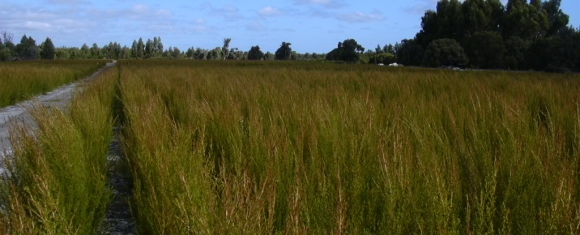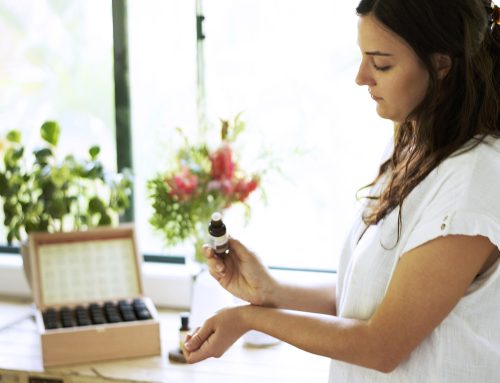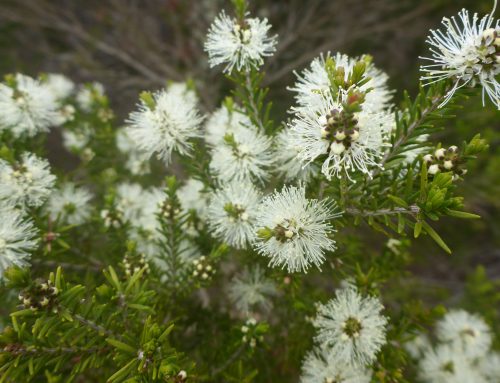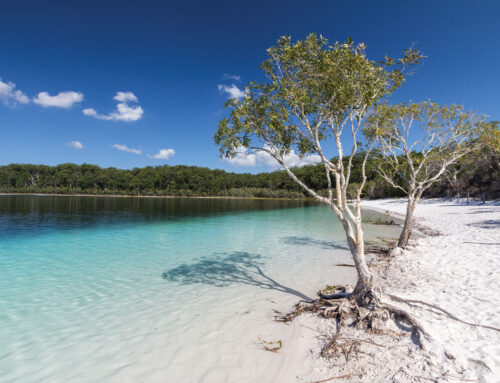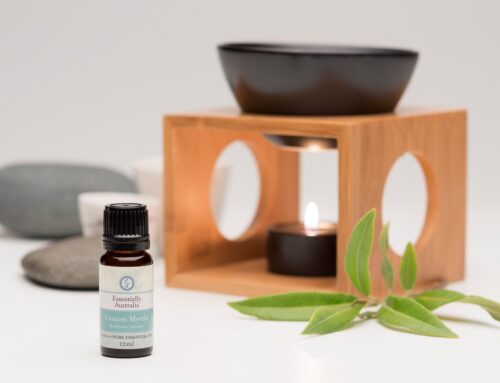In March 2013, we visited the only Fragonia essential oil plantations in the world in south west Western Australia. Where we videoed and learnt a lot more about Fragonia essential oil.
The Beginning of Fragonia Essential Oil
Fragonia was first recognised as plant with commercial potential as far back as 1996. It had been used in the cut flower industry, as a fragrant flower. In 2000 botantist Chris Robinson, introduced the present growers of Fragonia to the plant for the first time. Up until then the plant had been harvested for the cut flower market.
After many kilometres and visits into the wild areas in their region, the couple had luckily identified a great fragrant variety of Fragonia, as there appears to be great variation in the wild with regard to the plants aroma. They began planting out the species out on their property in 2001 for the purpose of producing Fragonia essential oil.This has been planted out, the end result has been spectacular.
Fragonia Name
In 2001 botantist Chris Robinson, decided the plant needed a name apart from its current name of the time Coarse Tea Tree.
Fragonia farmers John and Peta who had found a remarkably fragrant variety, they pushed to have it named ‘Fragonia’. These farmers, John and Peta who discovered the fragrant variety, then set about developing the variety on their property. To ensure the name Fragonia wasn’t used to sell much less fragrant varieties of Agonis fragrans, they decided to trademark the name ‘Fragonia’ to ensure poor varieties were not sold and therefore wreck the emerging reputation of Fragonia essential oil.
This unique move to trade marking of the name ensures the quality of Fragonia essential oil.
The Botany and Growing of the Fragonia Plant
Fragonia (Agonis fragrans) is a small plant which reaches about 2.4 metres high, it has white flowers on erect branches. The flower has five petals, flowering occurs between January to May.
Fragonia likes to grow in sandy, good draining soils, this sandy soil is in fact not well suited to traditional agriculture, Fragonia has evolved with the local soil, rainfall patterns, inconsistent seasons, local pests and insects (hence its essential oil in the plant to ward off insect eating).
The Fragonia plantations do need some irrigation to maintain annual regular supplies, irrigation tapes are used to minimise water volumes and water loss from evaporation.
The Fragonia growers have retained a great proportion of their property with native bush, insects are not a problem and the remnant vegetation also acts as a windbreak and also a water reservoir for the property as a whole.
Harvesting and Distillation of Fragonia Essential Oil
The plants are harvested in November, this avoids the risk of regrowth happening during winter when the occasional frost can kill the new shoots and then the plant itself.
They plants are cut to a few centimetres above the surface, the leaves and stems are collected. The are placed into stainless steel bins on the farm and steam distilled for around 1-1.5 hours. The spent water is returned to the plantation, as are the spent leaves which are used as mulch on the plantation.
Fragonia Oils Unique Constitution and its ‘Balancing Effect’
Fragonia essential oil contains monoterpene alcohols (like Tea Tree essential oil), however unlike Tea Tree it contains monoterpene hydrocarbons which provide a pleasing and softer aroma. Fragonia oil also contains the oxide 1,8 cineole.
Having these 3 different major components is different to most essential oils, more importantly the 3 major components are approximately equal in amounts, this equality of components has been suggested by leading French doctor and aromatherapist Dr Peneol, to be very unique and responsible for Fragonias apparent balancing effect on peoples emotions.
Monoterpene alcohols
linalool (8-12%), terpinen-4-ol (3-4.5%), alpha terpineol (5-8%), myrtenol (3-4%), geraniol (0.5-1.5%) nerol (0.1-1%) total approx 23-26%
Monoterpene hydrocarbons
alpha-pinene (21-29%), beta-pinene (1-2%), myrcene (1-2%), limonene (2-2.8%), para-cymene (2.2-3.5%) total approx 30-32%
Oxides
1,8 cineole (20-26%)
Research and Additional Properties of Fragonia Essential Oil
Fragonia essential oil is gentler than Tea Tree oil.
Fragonia essential oil contains around 25% active monoterpene alcohols, so it has potential use for irritated skin.
Fragonia’s essential oil and its monoterpene hydrocarbons and oxide 1,8 cineole, some can be good for fresh air and good for breathing.
Dr Peneol has also suggested that Fragonia oil has many useful properties.
Research by the University of Western Australia confirmed ‘anti-microbial activity of Fragonia essential oil similiar to Tea Tree but with a more pleasant fragrance’.
Further, The School of Paediatrics and Child Health University of Western Australia found “that Fragonia essential oil inhibits secretion of the IFNy, involved in the inflammatory response to tissue injury or infection”.
Fragonia Essential Oil For Emotional Issues
Fragonia essential oil has been seeing a lot of people experience, calming and relaxing of tension in the mind and emotions. Dr Peneol suggests it is the balance of the three compound groups which is responsible for these experiences. Dr Peneol believes Fragonia oil harmonises and rebalances emotions, which assists people in getting over past emotional issues.
Fragonia essential oil has also been helpful, before going to bed, to ease people to rest and calm down.
Jet lag recovery can be assisted by burning Fragonia essential oil.
Conclusions
Although Fragonia essential oil, is a new essential oil, its properties and uniqueness, as well as its very pleasant aroma, see it as an oil with great potential for a number of different applications, there is no doubt it is an Australian essential oil of the future. Fragonia essential oil has many uses and many more uses will be discovered or confirmed by studies. Fragonia essential oil may become for some people, the most fragrant essential oil Australia has ever produced.
As Fragonia essential oil and its aroma are so admired, there should be more products like body lotions and cream which take advantage of Fragonia essential oil and its amazing aroma and effects.


